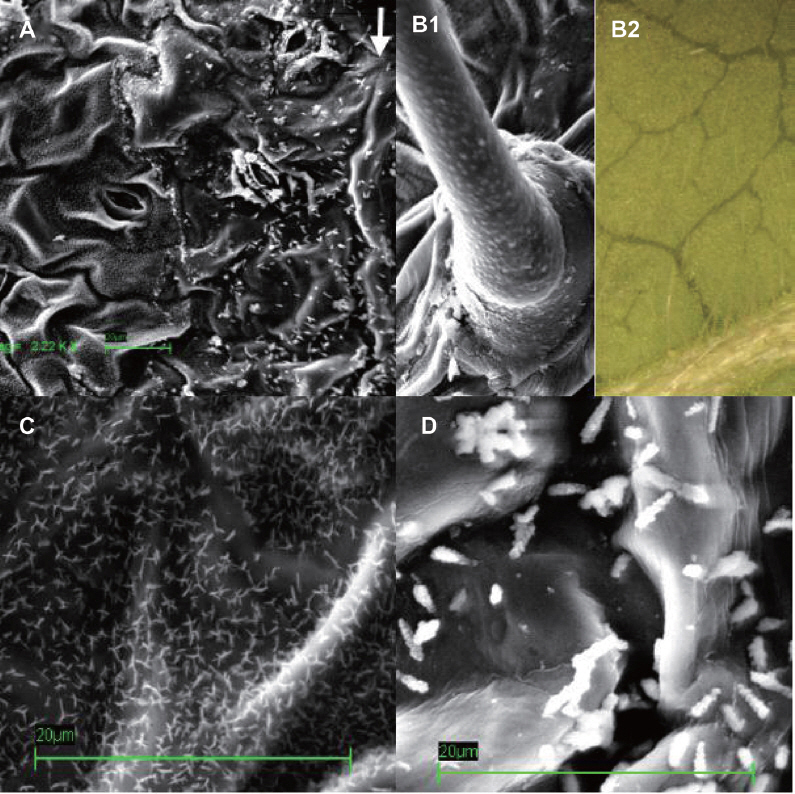Gets, S, Fulbright, D. W and Stephens, C. T Scanning electron microscopy of infection sites and lesion development on tomato fruit infected with
Pseudomonas syringae pv.
tomato.
Phytopathology 1983. 73: 39-43.

Krimm, U, Abanda-Nkpwatt, D, Schwab, W and Schreiber, L Epiphytic microorganisms on strawberry plants (
Fragaria ananassa cv
Elsanta): identification of bacterial isolates and analysis of their interaction with leaf surfaces.
FEMS Microbiol. Ecol 2005. 53: 483-492.


Leben, C Relative humidity and the survival of epiphytic bacteria with buds and leaves of cucumber plants.
Phytopathology 1988. 78: 179-185.

Lee, Y. H, Kim, N. G, Yoon, Y. N, Lim, S. T, Kim, H. T, Yun, H. T, Baek, I. Y and Lee, Y. K Multiplex PCR assay for the simultaneous detection of major pathogenic bacteria in soybean.
Korean J. Crop Sci 2013. 58: 142-148. In Korean

Myung, I. S, Kim, J. W, An, S. H, Lee, J. H, Kim, S. K, Lee, Y. K and Kim, W. G Wildfire of soybean caused by
Pseudomonas syringae pv.
tabaci, a new disease in Korea.
Plant Dis 2009. 93: 1214

Ramos, L. J and Volin, R. B Role of stomatal opening and frequency on infection of
Lycopersicon spp. by
Xanthomonas campestris pv.
vesicatoria.
Phytopathology 1987. 77: 1311-1317.

Schneider, E. W and Grogan, R. G Tomato leaf trichomes, a habitat for resident populations of
Pseudomonas tomato.
Phytopathology 1977. 67: 898-902.

The Korean Society of Plant Pathology. List of plant diseases in Korea. 2009. 5th ed Suwon, Korea. pp. 853 pp.
Underwood, W, Melotto, M and He, S. Y Role of plant stomata in bacterial invasion.
Cell. Microbiol 2007. 9: 1621-1629.







